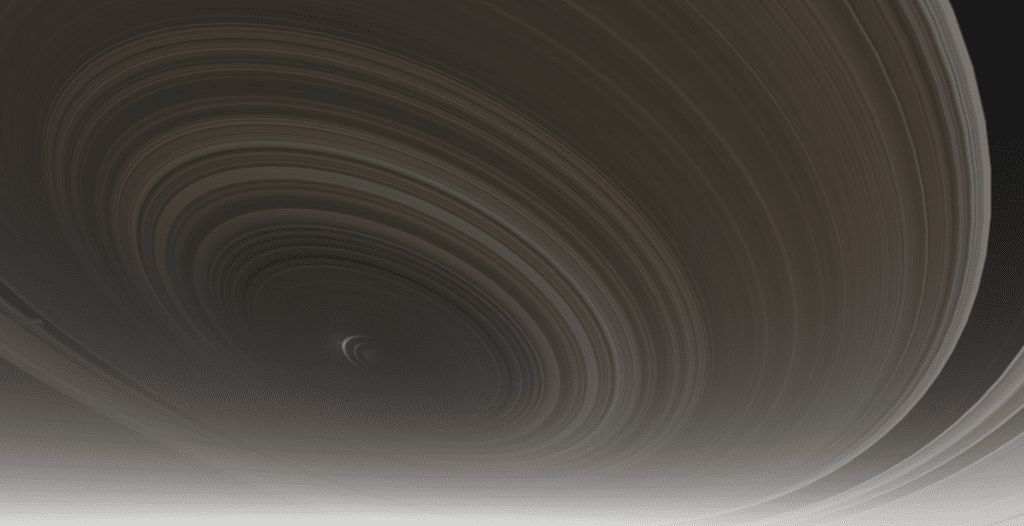When talking about planetary ring systems, Saturn and Jupiter likely spring to mind — they are our closest ringed neighbors, after all. But although impressive, their rings aren’t that large, in the grand scheme of things. Jupiter’s aren’t that large even when judging only by our Solar System. Neptune and Uranus also have rings, but they’re tinier.

Luckily, the Universe is a huge place, and there’s no shortage of beautiful ring systems to enjoy. There are also plenty of grand, sprawling ones to take your breath away. So, today, let’s take a look at what these ring systems actually are, how they form, and the biggest ones we’re spotted so far.
What even are planetary ring systems?
Every stellar body generates a gravitational field. Large, dense ones create a strong pull; giant, ponderous planets generate an immensely strong pull. It’s these large planets, typically gas giants, which sport planetary ring systems. It’s not all that different from how our Earth sports a Moon.
Ring systems are sprawling fields of material such as rocks, minerals, and ice. They look like wispy sheets of material, but up close, these are massive structures. They’re not particularly thick (Saturn’s rings, for example, are probably only 50 meters high) but they go all the way around a planet, most often in several different ‘rings’ each at different distances from the planet.
The exact size of the particles in a ring system is dependent on several factors: the material these particles are made of (mainly its specific strength and density), how far it is from the planet, and the strength of tidal forces at that altitude. In other words, rings are made up of particles in all kinds of shapes and sizes; the planet’s gravitational pull and rotation will try to grind them down, while a material’s toughness and its distance from the planet will help it survive in larger chunks. The materials they’re made of aren’t consistent — it’s all related to how the system and planet formed, and their history since. It’s generally gas, dust, and ice, but according to NASA, such particles can be “as large as mountains”.
Lastly, know that although we call them ‘planetary’ ring systems, they don’t only form around planets. Minor planets, moons, unignited stars (brown dwarfs) can also sport ring systems. There is even some evidence of a similar structure residing in the void between Venus and Mercury.
How do they form?
As far as we understand, there are three main ways for a planet to get the material that makes up its rings.
The first one is that they simply ‘gathered’ it in the early days of the system they inhabit — the so-called accretion stage. In this phase, a star system resembles a disk churning around its star. In time, pockets of matter come together (accrete), gaining gravitational strength, which keeps drawing more material in. This is how stars and planets form (the star just forms first and can thus grab most of the matter in the disk).
If a planet forms early and gets large enough, it can start drawing in material from around it, preventing it from accreting into the forming planets. Instead, it forms a ring system under the hosts’ tidal forces (gravitational pull + rotational movement). This is exactly the same process that builds planets around a star from the primordial dust, only at a much smaller scale.
The second way is to use your gravity to capture asteroids or moons or let some form near you and pull them inside your Roche limit. This is a theoretical boundary beyond which a planet’s tidal forces will break apart any other stellar body. Inside this range, moons and asteroids will be ground into dust. The Roche limit also dictates how far a body’s influence extends during the accretion phase — nothing can form within this boundary due to the extreme tidal forces present.
The third way generally doesn’t form very large ring systems by itself. It involves a planet capturing any material produced by asteroids crashing into its moons, or materials produced by volcanic processes that make it into space (from traditional or cryovolcanoes). Compared to the previous two, such capture processes involve minute amounts of matter.
One of the final elements that can help produce and maintain a planetary ring system is shepherd (or ‘watcher’) moons. These are larger bodies that orbit through or on the edges of rings. Their gravity pulls at particles in the ring as they orbit, which helps to maintain the shape of the rings — they ‘herd’ the ring particles, hence their names. If you see any empty strips in a ring system, it’s very likely that a shepherd moon created it.
The movements of such a moon through the ring are truly a thing of beauty. As they orbit, shepherd moons form ripples through the ring, like the wake of a boat traveling over a calm lake. This only makes the thought that such moons tend to be short-lived that much sadder. They’re generally inside their host’s Roche limit, so they will eventually be broken apart and ground down.
Now that we have a better understanding of what they are and how they form, let’s take a look at the biggest, most impressive ring system we’ve found so far.
J1407b

Discovered way back in 2015, J1407b boasts the largest ring system we’re ever seen — around 200 times larger than Jupiter’s (the largest in our solar system). The planet that hosts it is equally immense: we don’t exactly know whether it’s a gas giant or a brown dwarf. So far, it’s been referred to as a super-Jupiter type of stellar body.
To give you an idea of just how stupidly massive this ring system is, if Saturn had the same rings, they would be many times larger in diameter than the moon in the night’s sky. It’s not only that you could see it easily with the naked eye — it would pretty much dominate the view. All in all, the exoplanet boasts some 30-odd layers of rings.
“It’d be huge. You’d see the rings and the gaps in the rings quite easily from Earth,” said Matthew Kenworthy of the Leiden Observatory in the Netherlands, one of the co-authors on the paper describing the findings, at the time. “It’d be several times the size of the full moon.”
Maybe the size of its rings helped too because J1407b was the first confirmed case of an exoplanet with a ring system. So far, it’s also the only exoplanet with rings that we’ve spotted.
Still, in cosmological terms, such lush manes of rings do not last for long. Researchers expect them to get progressively thinner and disappear in the next several million years as new moons form from the sheer quantity of material zipping and zapping through J1407b’s rings. Compared to planets in our solar system, J1407b is also very young, at only about 16 million years old. The Sun and Earth are 4.5 billion years old.
So it might be just youthful energy that makes large ring systems possible. Right now, we simply don’t know. The methods we use to spot exoplanets (planets outside our solar system) aren’t very good at all at picking up ring systems — they can do it, but there’s a lot of luck involved.
For now, our best knowledge of planetary ring systems come from our neighboring planets. There may well be larger rings than those boasted by J1407b out there, but until we can get a better view into deep space — or, even better, make our way there — they will likely remain undiscovered.


